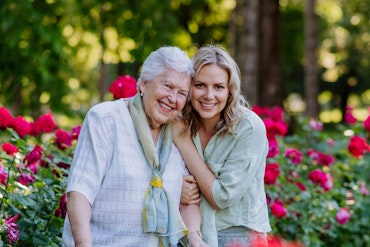Gap in care leaves hip fracture patients at risk
The fiscal and human cost of hip fractures among older Australians and New Zealanders, and the gap in their care, has been highlighted in the 2017 Australian and New Zealand Hip Fracture Registry (ANZHFR) report.

Research shows 25 percent of elderly hip fracture patients will have died in the year after discharge (Source: Shutterstock)
The report shows that during 2016, there were close to 22,000 hip fractures in Australia alone with an estimated cost of $908 million.
Professor Jacqueline Close, Geriatrician and Co-Chair of the ANZHFR, says injury is the leading cause of hospitalisation in older Australians.
“With Australia’s ageing population, the number of hip fractures each year is estimated to rise to more than 30,000 in the next five years at a cost exceeding $1 billion,” Professor Close says.
The human cost of hip fractures is even higher with the figures showing that 5 percent will die in hospital; over 10 percent will be newly discharged to an aged care facility; more than 50 percent will still experience a mobility-related disability 12 months after injury, and up to 25 percent will have died in the year after discharge.
Despite the statistics, the research states that ‘provision of effective secondary preventative care after fracture, such as osteoporosis assessment and treatment, and falls reduction interventions, is not routinely delivered. This care gap leaves hip fracture survivors with an increased risk of subsequent falls and fractures that are associated with increased mortality and loss of societal contributions’.
Professor Close also highlights that huge opportunities remain to further improve care including the prevention of future falls and fractures.
“Strong evidence exists to support treatment of osteoporosis in this population yet there remains a care gap between what we are and should be doing,” she says.
Commenting on the findings, Professor Ian Harris, Orthopaedic Surgeon and fellow Co-Chair of the ANZHFR says the report, which highlights performance against national clinical care standard with the potential to alter the outcome for some of the frailest members of society, continues to show variation in the way care is delivered to people with a hip fracture.
“Some of this variation between hospitals can markedly change the experience for the older person including how we manage their pain, timing of surgery and the opportunity to start walking again after surgery,” Professor Harris says.
“Data is a powerful driver of change in the health system and the Hip Fracture Registry is run by clinicians for clinicians and provides hospitals with real time performance data, allowing them to see how they perform against other hospitals.”
The full 2017 ANZHFR report is available to view online.






















